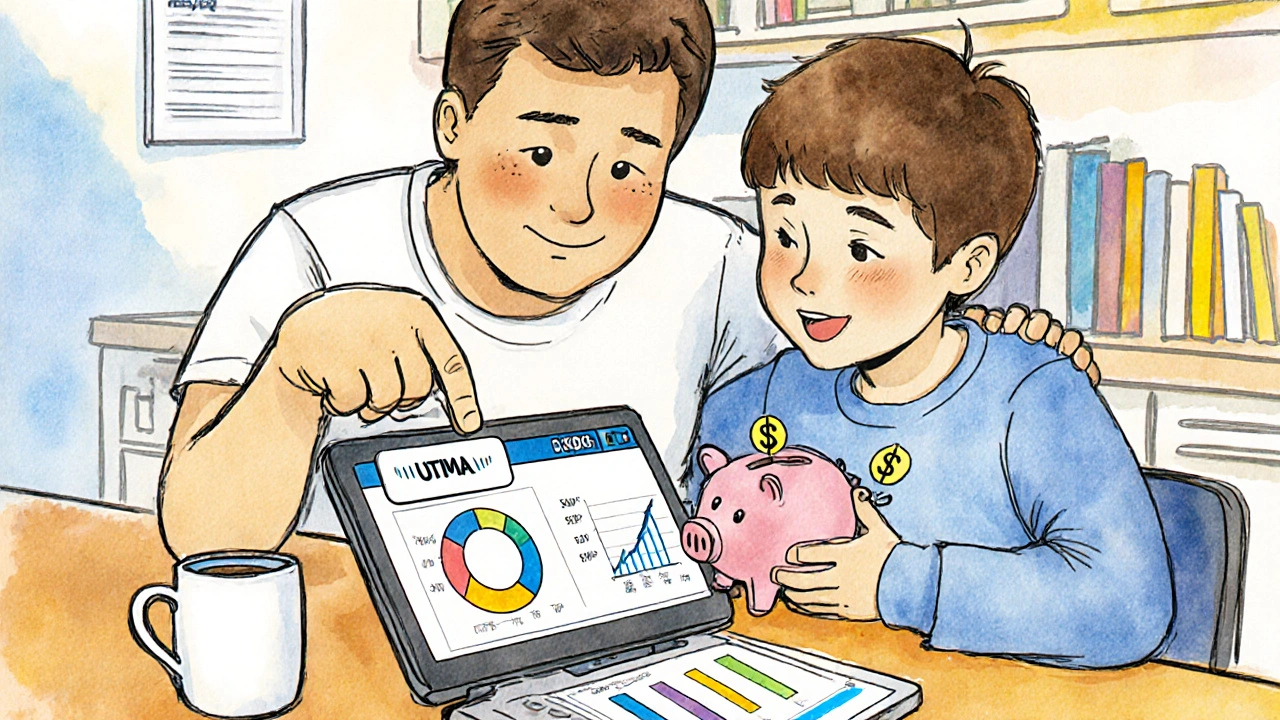UTMA Accounts: What They Are and How They Help Kids Build Wealth
When you open a UTMA, a Uniform Transfers to Minors Act account that lets adults hold assets for minors until they reach legal age. Also known as a custodial account, it’s one of the simplest ways to give a child real investment exposure—stocks, ETFs, even real estate—without setting up a trust. Unlike a 529 plan, which locks money into education, a UTMA lets the child use the funds for anything once they turn 18 or 21, depending on your state. That flexibility is why so many parents, grandparents, and even family friends choose it to start building wealth early.
Here’s how it works: you, the adult, open the account and name the child as the beneficiary. You control the account until the child hits the age of majority—usually 18 or 21—but you can’t take the money back. Once they’re old enough, the account becomes theirs, no questions asked. That’s the trade-off: you give up control for tax advantages. Earnings in the account are taxed at the child’s lower rate until they hit certain income thresholds, which makes UTMA accounts a smart way to grow money over decades without heavy tax drag.
People often confuse UTMA with UGMA accounts—same idea, but UGMA only covers financial assets like cash and securities. UTMA lets you put in real estate, art, patents, even royalties. That broader range means you can teach kids about more than just stocks. Maybe you buy a rental property in their name, or invest in a thematic ETF tied to clean energy. The goal isn’t just to save—it’s to show them how money works in the real world.
But there’s a catch. Once the child takes over, they can spend it on a car, a trip, or even video games. That’s why many families pair UTMA accounts with open conversations about money. It’s not just a savings tool—it’s a teaching tool. And because these accounts show up on financial aid forms, they can affect college aid eligibility. That’s why some parents choose to delay contributions until later, or use them alongside 529 plans to balance flexibility and aid impact.
What you’ll find in this collection are real, no-fluff guides on how to actually use UTMA accounts—not just the theory, but the tactics. How to pick the right broker. Which ETFs work best for long-term growth. How to avoid common mistakes that drain value over time. You’ll see how people are using UTMA accounts to fund not just college, but startups, travel, or even down payments. These aren’t hypothetical examples. They’re from real families who’ve built real wealth, one paycheck at a time.
Robo-Advisors for Teens and Custodial Accounts: What You Need to Know in 2025
Learn how to open and manage a robo-advisor custodial account for teens in 2025. Understand the rules, top platforms, SEC requirements, and what happens when your child turns 18.
View More